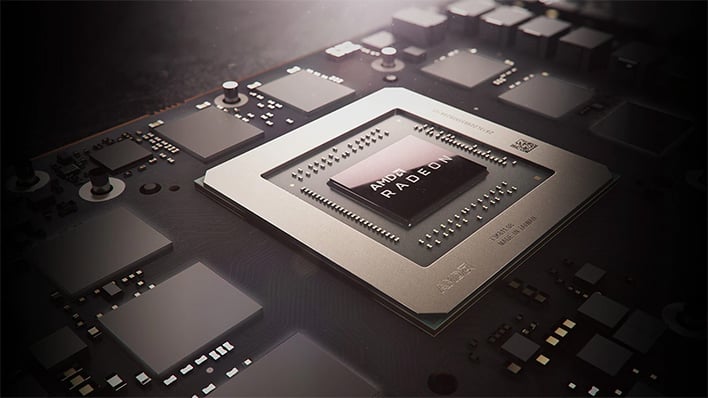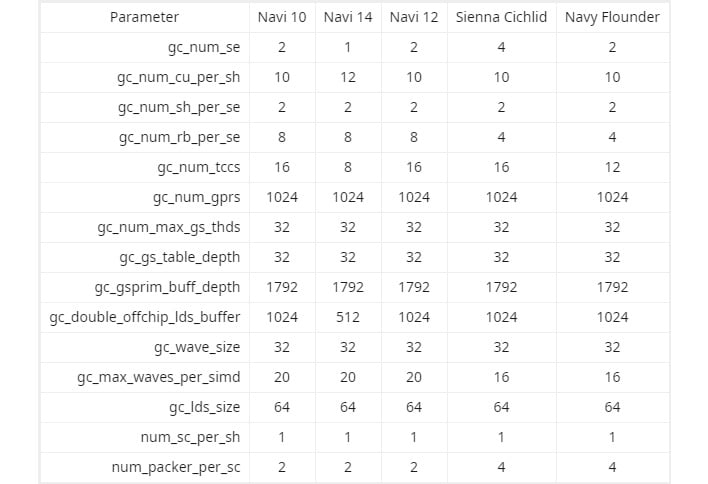AMD Radeon RX 6000 Navy Flounder Budget Navi GPU Rumored With 40 CUs, 192-bit Memory Bus

The bulk of the anticipation over AMD's upcoming graphics card launch is centered on Big Navi, and how whatever ends up being its flagship part from the upcoming Radeon RX 6000 series (assuming it's called that) will compare to the best NVIDIA has to offer. We will find out in due time. However, the enthusiast sector will not be the only next-gen GPU battleground. More affordable options will eventually emerge, and some leaked data from a Linux driver provides some potential specs of AMD's lower end Navy Flounder GPU.
Navy Flounder is the presumed codename for Navi 22. Based on past leaks mixed in with a bit of speculation, Navi 22 will end up replacing the Navi 12 GPU that sits inside the current-generation Radeon RX 5600M with HBM2 memory for Apple Mac computers, to give you an idea of the performance range we are looking at.
As it pertains to Navy Flounder, Reddit user stblr noticed noticed that a recent update to AMD's RadeonOpenCompute (ROCm) platform contains references to the GPU, with some specifications. The user parsed the data and arranged it into a handy table. Here's a look...

According to the user, you arrive at the total number of compute units (CUs) by multiplying the first three values. Looking at Navy Flounder, there would be 40 CUs, compared to 80 CUs for Sienna Cichlid, otherwise known as Navi 21 or Big Navi. The number of CUs on Navy Flounder is identical to Navi 10, as found in the Radeon RX 5700 XT.
The user also states that the gc_num_tccs field, which is the number of texture channel caches, is typically related to the memory bus width. There have been exceptions, but barring one in this case, it looks like Navy Flounder will have a 192-bit memory bus. For reference, the Radeon RX 5700 XT has a 256-bit memory bus, and 448GB/s of memory bandwidth.
None of this is official information, and naturally there is only so much to be gleaned, even if the specifications are accurate. It will mainly boil down to what kind of performance gains AMD's second generation Radeon DNA (RDNA 2) architecture is able to deliver, compared to RDNA 1. We know hardware support for real-time ray tracing is coming, and AMD has said Big Navi will be its halo product. But otherwise, it is a waiting game.
Fortunately, it is not a long wait. AMD is planning to launch its Radeon RX 6000 series on October 28.

